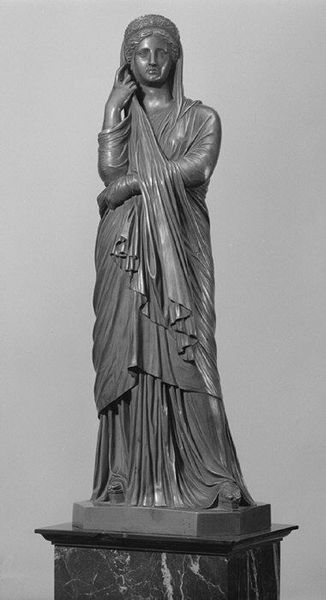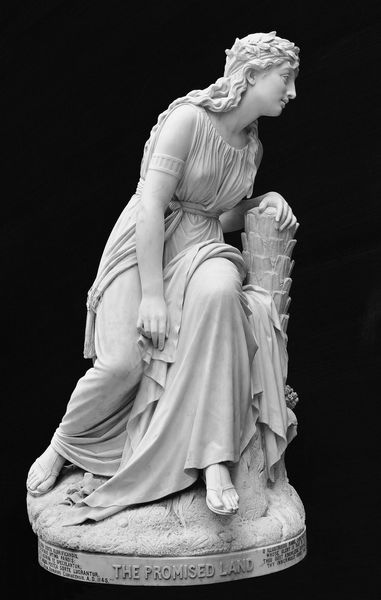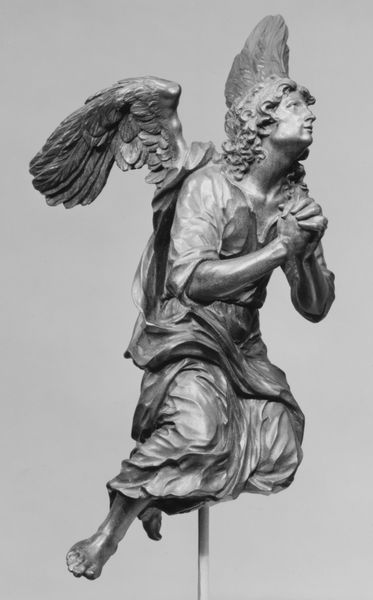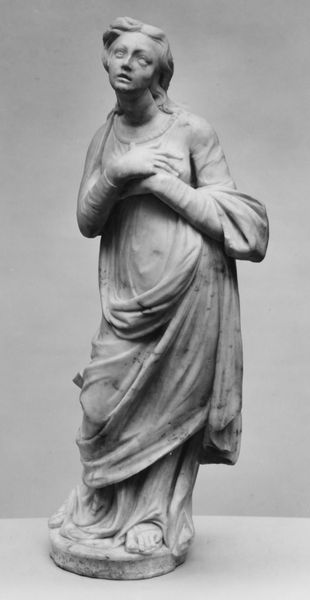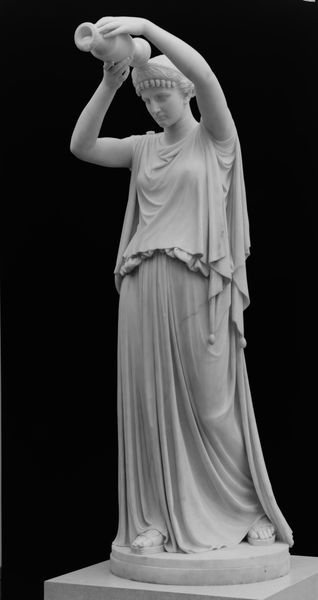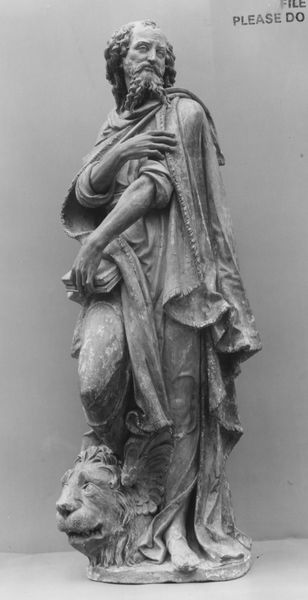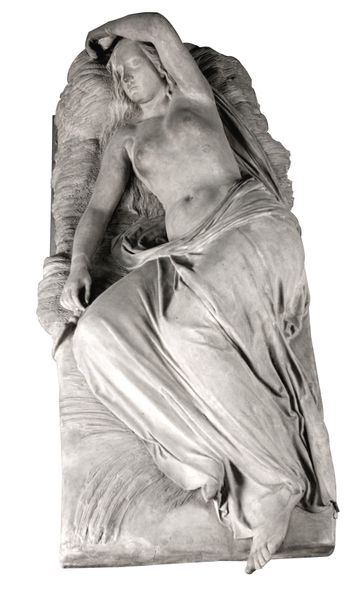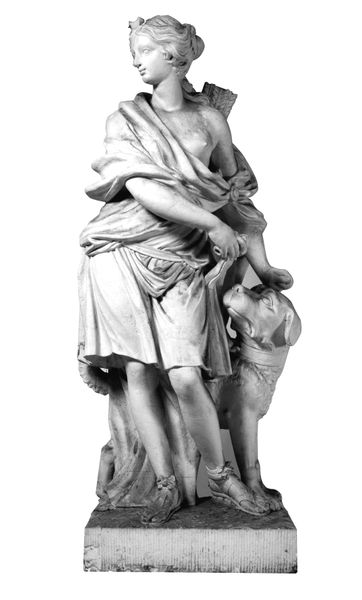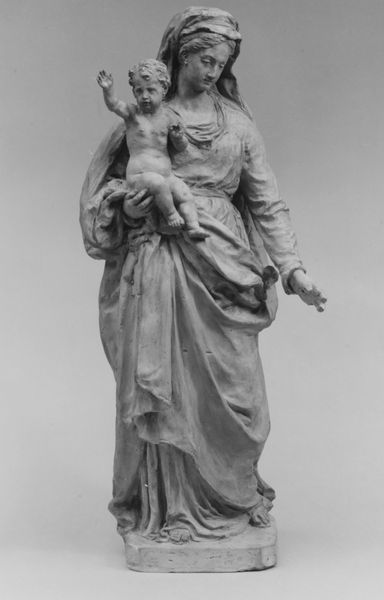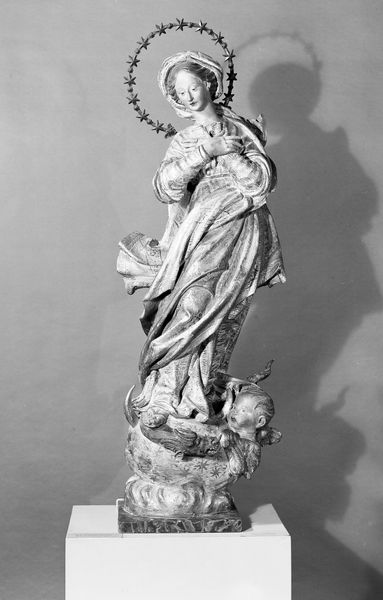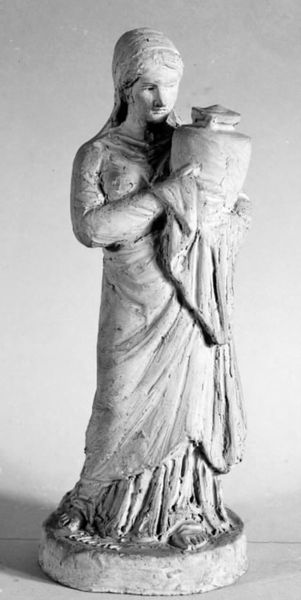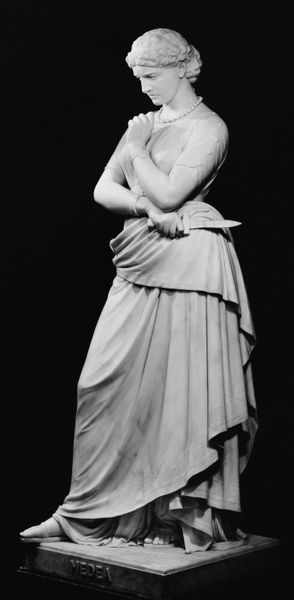
sculpture, marble
#
portrait
#
neoclacissism
#
sculpture
#
figuration
#
sculpture
#
academic-art
#
decorative-art
#
marble
Dimensions: Height: 52 5/8 in. (133.7 cm)
Copyright: Public Domain
Curator: A somber, reflective mood seems to permeate this piece. The downturned gaze, the draped fabric...it all coalesces into a feeling of quiet contemplation. Editor: Indeed. What we are observing is John Bacon the Elder’s marble sculpture, “Faith,” created in 1791. It’s a prime example of Neoclassical sculpture, currently residing at the Metropolitan Museum of Art. Curator: Neoclassical is instantly apparent, isn’t it? The crisp lines, the idealization of form, all speak to that movement’s emphasis on classical aesthetics. The treatment of drapery is particularly telling; see how it both reveals and conceals the figure’s form with a remarkable restraint. Editor: Absolutely. The historical context reveals that such sculptures served not only as aesthetic objects, but also as embodiments of civic virtue. During the Enlightenment, these representations aimed to inspire moral rectitude among the public, and how these translated to specific civic roles based on the gender represented. Curator: I find that quite fascinating. Looking at the compositional balance, there is something undeniably moving in the juxtaposition of the smooth surfaces of her face against the intricate folds of her garments. The tactile quality is wonderful, even in reproduction; one can imagine the coolness and density of the marble itself. Her fingers resting on the cross are particularly noteworthy in directing the gaze to the central symbol. Editor: Given its historical placement and the patronage of institutions rooted in the Enlightenment, it's easy to envision its purpose—it’s almost didactic in conveying moral values. Yet, viewing it now, distanced from that original socio-political sphere, do we connect with it in similar ways? Is the symbolism still impactful, or does the form speak more powerfully than the overt message? Curator: Perhaps the tension lies in the interplay between form and symbol. "Faith" as a sculpture engages us through its classical purity, irrespective of any imposed reading of Enlightenment virtue. While that history certainly enhances the sculpture, the success of the marble speaks independently and clearly. Editor: An excellent reminder to always contextualize, but also to appreciate the intrinsic power an artwork wields, transcending historical parameters and resonating beyond its own time.
Comments
No comments
Be the first to comment and join the conversation on the ultimate creative platform.
